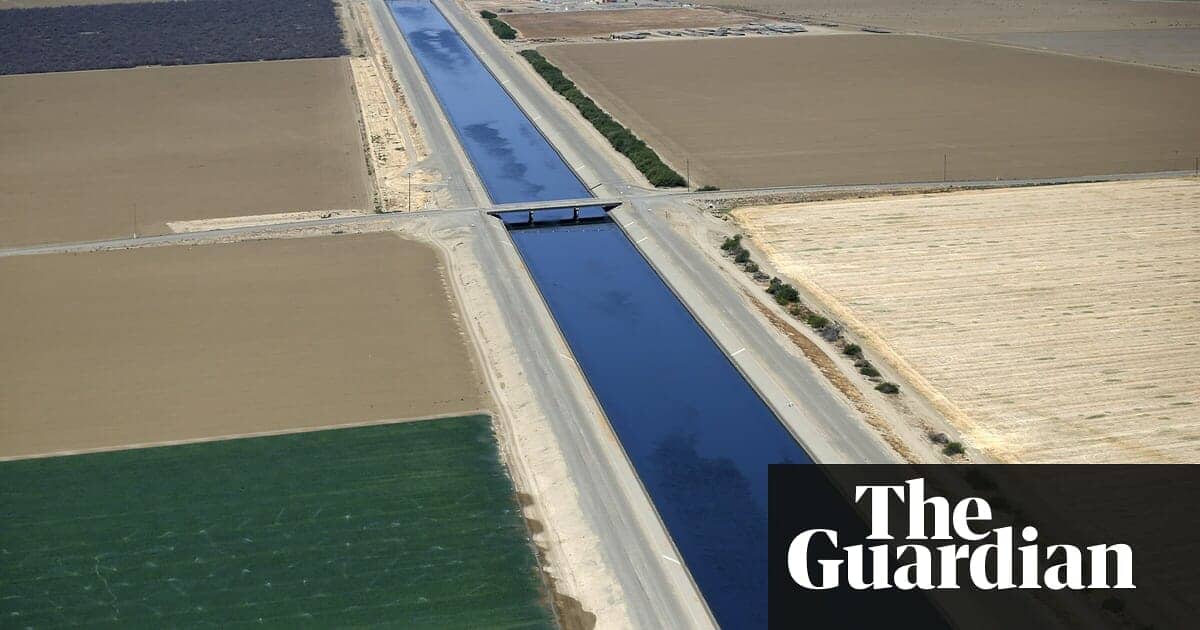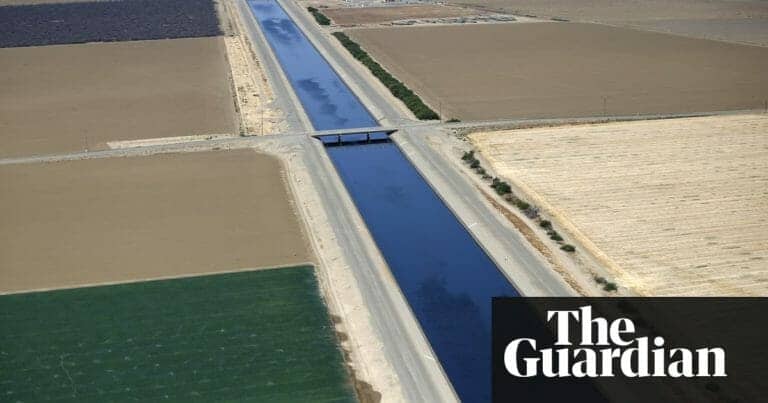Farm fields along the path of the California aqueduct in the Central Valley, a region that produces a quarter of the nation’s food. Photograph: Lucy Nicholson/Reuters
The floor of the Central Valley is slumping, and there is arsenic in the tap water. Now it seems the two problems are connected
Isabel Solorio can see the water treatment plant from her garden across the street. Built to filter out the arsenic in drinking water, it hasn’t been active since 2007 – it shut down six months after opening when the California town of Lanare went into debt trying to keep up with maintenance costs.
“It’s cruel to be living in a state that’s so powerful, so rich, but we can’t count on clean water,” said Solorio, 51, sipping from a bottle amid her flowers and cactus collection.
Towns across the Central Valley region of California have had tap water arsenic levels above the federal limit for almost two decades, levels that research suggests can raise the risk of a variety of cancers and lower IQ in children. During the same period, locals and scientists have noticed another odd phenomenon: the valley is sinking, at rates as fast as 25cm a year.
Now it seems that the two problems are connected. […]
Full article: Sinking land, poisoned water: the dark side of California’s mega farms
More about ground subsidence and water usage:
Animation of Satellite Data Shows SoCal “Breathing” Water
California’s water wars heat up at Sacramento hearing over river flows
The Valley floor is sinking, and it’s crippling California’s ability to deliver water
Exploring the Hydrodynamics of Sediment Diversion at Mid-Barataria
Mississippi River Sediment Diversions & Louisiana



